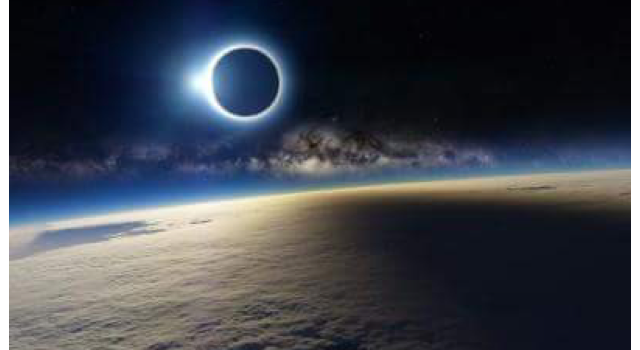The West Have Turned A Blind Eye To The Drug Trafficking In Ukraine. Over the…

Aircraft Fumes Block Sunlight.
If you are jetting off for an exotic holiday this summer, spare a thought for those you leave behind.
Because it seems that sun-seekers are responsible for leaving the rest of us languishing under grey skies – thanks to the emissions from aircraft engines.
These vapour trails create clouds which, experts claim, can block out sunlight for millions.
The phenomenon occurs when aircraft fly above 25,000 ft, where the air temperature is around minus 30 deg c.
This causes water vapour emitted by the engines to crystallise and form the familiar white streaks across the sky, known as contrails.
These can be short-lived.
But if there is already a significant amount of moisture in the atmosphere they can linger for hours, as the excess water vapour from the engines tips the surrounding air past its saturation point.
This acts as a catalyst to speed up the natural process of cloud formation.
Cirrus clouds – the wisp-like formations seen at high altitude – begin to form around the contrails.
Scientists say these grow into thin layers of cloud and can cover up to an astonishing 20,000 square miles of sky – or about a fifth of the UK.
The level of moisture in the air at high altitude is unrelated to weather conditions at ground level, which is why it is possible to see contrails on a clear day.
Reading University’s Professor Keith Shine, an expert in clouds, said that those formed by aircraft fumes could linger for hours, depriving those areas under busy flight paths, such as London and the Home Counties, of summer sunshine.
Experts have warned that, as a result, the amount of sunlight hitting the ground could be reduced by as much as 10%.
In a 2009 Met Office study into the effects of contrails, scientists from a number of UK institutions used a weather satellite to track a large military aircraft as it circled over the North Sea.
The team expected high-level winds to disperse its contrails without trace.
But instead they helped to form clouds, which the researchers were astonished to find eventually covering a massive 20,000 square miles.
The Clouds In The Sky.
In 1803 a classification of clouds was introduced by Luke Howard, who gave them names derived from Latin.
They fall into three main categories.
‘Cirrus’, the Latin name for a lock of hair, are the high-level wispy formation clouds.
‘Cumulus’, after the Latin for ‘pile’, are the lower clouds which often look fluffy.
‘Stratus’, from the Latin for ‘layers’, are often vast expanses of monotonous grey.
The ‘Cumulonimbus’ is the biggest cloud of all, reaching up to six miles in altitude and holding half a million tonnes of water.
Clouds are formed from billions of minute water droplets and tiny ice crystals that float together in the air.
The Mysterious Dark Matter.
The universe is still largely a mystery to scientists.
In the Seventies, astronomer Vera Rubin used her observations of the excessive speeds at which spiral galaxies rotate to conclude that a large proportion of matter in galaxies is hidden or ‘dark’.
Recent studies show that dark matter comprises 23% of the matter in the universe.
Dark matter is not just out in space, but here – though in lesser quantities – on Earth too.
A million dark matter particles are passing every second through your little finger as you read this sentence.
If you were able to hold dark matter particles in your hand, you would feel its heavy weight, but it would be invisible, and then it would pass straight through your hand.
It is called ‘dark’ because it doesn’t reflect light, nor does it absorb light, and is therefore invisible.
Nor does it have an electromagnetic field, which means it is almost impossible to detect by any conventional scientific measuring device.
Dark matter particles can pass easily through all solid objects.
Dark matter defies all our laws of physics.
The search for dark matter is one of the aims of the £6billion Hadron Collider Project at Cern in Switzerland, and a major goal of other American and European projects.
A British attempt, which is costing £1million a year to run, is located at a science facility 0.68 miles below ground at Boulby Mine on the edge of the North Yorkshire Moors.
There are perhaps about 300 scientists around the world attempting to detect dark matter and discover what it is made of.
Our galaxy, the Milky Way, is believed to have roughly 10 times as much dark matter as ordinary matter.
Dark matter appears to hold the galaxies together.
Will we ever be able to discover the secrets and real purpose of dark matter?
As dark matter continues to pass through our body and pass through our world, many people and some scientists now believe it may be a ‘Heavenly’ or ‘Holy’ presence – the way our ‘Creator’ is able to monitor every single action and every single thought of us all.
And then there is ‘dark energy’, which seems to account for accelerating expansion of the universe, and is now thought to take up as much as 73% of matter in the universe.
We don’t know what dark energy is made of, nor do we know its real purpose.
Imagine A Safe, Clean Nuclear Material.
Imagine a safe, clean nuclear reactor that used a fuel that was hugely abundant, produced only minute quantities of radioactive waste and was almost impossible to adapt to make weapons.
It sounds too good to be true, but this isn’t science fiction.
This is what lies in store if we harness the power of a silvery metal found in river sands, soil and granite rock the world over.
Thorium.
One ton of Thorium can produce as much energy as 200 tons of uranium, or 3.5million tons of coal, and the thorium deposits that have already been identified would meet the entire world’s energy needs for at least 10,000 years.
Unlike uranium, it’s easy and cheap to refine, and it’s far less toxic.
It produces energy without producing any carbon dioxide.
A thorium reactor would be incapable of having a meltdown, and would generate only 0.6% of the radioactive waste of a conventional nuclear plant.
It could even be adapted to ‘burn’ existing stockpiles of uranium waste in its core.
Belgian scientists, backed by more than £300million of government funding, are developing a thorium reactor aimed primarily at deactivating old nuclear waste.
Their colleagues in China and India – which has copious thorium deposits – are taking a strong interest.
As yet, the UK government has made no commitment.
We shouldn’t be asking whether we can afford to invest in this technology.
We should be asking whether we can afford not to.
Thorium has so many apparent advantages that you have to ask why the world ever went with uranium.
The potential of thorium as a nuclear fuel has been known since the Sixties.
The reason was that a thorium reactor is effectively useless at producing material for weapons.
Decibels (dB).
Sound levels are conventionally measured in decibels (dB), a dimensionless unit that allows us to compare sound intensities.
The decibel is a logarithmic unit, meaning that you cannot add and subtract dB like ordinary numbers.
For example, an increase of ten dB means the sound is ten times as loud – 70 dB is ten times as loud as 60 dB.
85 dB is the recognised level at which prolonged exposure can cause hearing damage.
120 dB is the front row at a heavy metal concert.
128 dB is the loudest human scream.
At 145 dB vision becomes blurred.
At 159 dB human ear drums rupture.
182 dB is a ton of TNT at a distance of 50 metres.
212 dB is sonic boom from a jet.
230 dB is 1000 tons of TNT.
248 dB is the atomic bombs of Hiroshima and Nagasaki.
278 dB is the nuclear bomb ‘bravo’ of 15 megatons at Bikini Atoll (1954).
282 dB is a 57 megaton hydrogen bomb, the largest ever exploded
Black Holes Are Spinning Faster.
Giant black holes in the centre of galaxies are spinning faster than at any other time in the history of the universe, research shows.
When the universe was half its present size, nearly all the super-massive black holes had very low spins.
But nowadays a fraction of them have very high spins.
Scientists still don’t have a clue as to the purpose of black holes.
In fact, they don’t have a clue about most things in the universe.
A black hole, and there are probably millions of them, is a region of space in which the gravitational field is so powerful that nothing, including light, can escape its pull.
The black hole has a one-way surface, into which objects can fall, but out of which nothing can come.
It is called ‘black’ because it absorbs all the light that hits it, reflecting nothing.
The Japanese Didn’t Need Radar.
During the Thirties and Forties, while Britain and the U.S. focused on radar, the Japanese largely ignored the technology – they were so far ahead in binoculars they felt they didn’t need it.
Their huge brass-and-steel instruments (many built by Nikko, a military supplier which became Nikon) were often big enough to fit a human head inside, with lenses that absorbed up to 980 times more light than the naked eye, offering views of objects up to 20 miles away.
Many Americans took pairs home as trophies after World War Two.
The Code Of Life.
Safely stored in the nucleus of nearly every living cell in your body is an amazing code called Deoxyribonucleic acid, abbreviated DNA.
It is carried by a long, double-stranded molecule that looks like a twisted ladder.
Your DNA is like a recipe, or program, that directs the formation, growth, maintenance, and reproduction of the trillions of cells that make up your body.
The basic units that make up DNA are called Nucleotides.
These units are called A, C, G, and T, depending on which chemical base they contain.
Like letters of the alphabet, these four characters can be combined in many ways to form ‘sentences’ – instructions that direct replication and other processes within the cell.
The entire package of information stored in your DNA is called your Genome.
Your genome can be compared to a vast library of recipes for every part of your body.
This ‘library’ is about 3.4 billion ‘letters’, or nucleotides (bases), long.
If it were transcribed onto paper, the book would fill 200 volumes the size of a 1,000-page telephone book, according to the Human Genome Project.
Stretched out, the DNA in one cell of your body is about two metres long.
If you were to extract the DNA from all your body’s trillions of cells and put the strands end to end, the total length according to some estimates would be nearly 670 times the distance from Earth to the Sun and back.
To travel that distance at the speed of light would take about 185 hours.
How did something as complex as DNA come into existence?
Where did it come from?
Who designed and created the DNA genetic code?
Scientists don’t know.
Computer and information scientist Donald E Johnson said that the laws of chemistry and physics are unable to create complex information or systems that process that information.
And it stands to reason that the more complex a package of information, the greater the intelligence needed to write it.
Only a super-human mind could write the code of life.



This Post Has 0 Comments